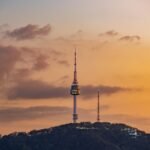Wondering when to go to Mumbai without running into huge crowds or bad weather? Well, you're in luck! The ideal time to visit Mumbai largely depends on a few key factors: weather, budget, local events, and what kind of experience you're chasing. So, whether you're eager for sunny beach days or vibrant cultural fiestas, let's dive into the details.
Overview of Mumbai’s Climate
First up, let's talk about the weather in Mumbai. The city experiences a tropical climate that can be broken down into three main seasons: winter, summer, and the monsoon.
- Winter (November to February) is usually the most pleasant time to visit, with daytime temperatures averaging around 25-30°C (77-86°F) and lower humidity.
- Summer (March to June) can be a scorcher, with temperatures soaring to 35°C (95°F) and beyond, often paired with steamy conditions.
- Monsoon Season (June to October) sees heavy rain, especially from July onwards, which can significantly affect travel plans. That said, the monsoon does bring a lush green blanket over the city!
Each of these seasons beckons different experiences, so let's map out what's in store each month.
Month-by-Month or Seasonal Breakdown
November to February (Winter)
Weather: Mild and dry. Expect pleasant days and cooler nights.
Events: Diwali (usually in November), Mumbai Film Festival, and Christmas celebrations.
Pros: This is the peak season for tourism, and you'll find that most outdoor activities like visiting Marine Drive, Gateway of India, or Juhu Beach are absolutely delightful. Hotels may be pricier, but the vibe is lively!
Cons: Yes, it can get crowded as travelers flock from all around the globe.
Who it's best for: Families seeking pleasant weather, couples looking for romantic evenings, and festival enthusiasts.
March to June (Summer)
Weather: Hot and humid. Daytime temperatures can soar above 35°C (95°F).
Events: Gudi Padwa (March), and plenty of local food festivals in April and May.
Pros: Prices often drop during the hotter months, making it a great time for budget travelers.
Cons: Outdoor activities can be challenging due to high temperatures. The humidity can be a bit of a mood dampener, especially if you're not used to it.
Who it's best for: Budget travelers ready to face the heat and beach lovers looking to enjoy the coastline.
June to October (Monsoon)
Weather: Rainy and humid, with July receiving the heaviest rainfall.
Events: Ganesh Chaturthi (August-September), which is celebrated with elaborate processions.
Pros: If you like photography and lush landscapes, the lush greenery after the rains is breathtaking. You'll also find fewer crowds, making it easier to explore.
Cons: Travel disruptions can occur due to heavy rainfall, and some outdoor attractions might be closed.
Who it's best for: Photographers, nature lovers, and those looking to experience a quieter Mumbai.
Tips Based on Travel Style
So, now that we've covered the seasons, let's get a bit personal with your travel style:
-
For Budget Travel: Late March to early June is your best bet. You can snag cheaper hotel deals and enjoy a less crowded experience, though be prepared for the heat.
-
For Avoiding Crowds: The monsoon months like July to September are when you can enjoy a quieter vibe in the bustling city. It's also an excellent time for introspective travelers and solo explorers.
-
For Outdoor Activities or Cultural Events: November to February is the sweet spot, as you can partake in outdoor adventures, beach days, and vibrant festivals without breaking a sweat. If you're into culture and events, don't miss the Diwali and Ganesh Chaturthi celebrations!
- For Romantic or Solo Trips: Maybe you crave cozy sunsets and strolls by the sea? Try visiting during winter (December-January). The sunsets around this time are particularly magical, and it's great for romantic outings.
The ideal time to go to Mumbai seems to lean heavily on what you're after on your travel journey.
Local Flavor and Hidden Gems
Lastly, remember that every season holds unique local experiences! In the winter, take a stroll down Chowpatty Beach as the sun sets, catching delicious local street food. During the monsoon, sip on some hot chai while admiring the rain dancing on the streets. In summer, enjoy the cool shade of the city's many parks and visit local temples to experience many quiet moments away from the bustling crowds.
It really depends on what kind of experience you're looking for. Some travelers love January because of the quiet vibe, while others aim for the celebrations in September. Each season holds its own charm, and there's always something new to discover in this vibrant city!
FAQ
Is July a good time to visit Mumbai?
It can be if you don't mind rain! The monsoon transforms the landscape, and you'll avoid larger crowds, but some plans might get disrupted by heavy showers.
When is the rainy season in Mumbai?
The rainy season typically runs from June to October, with July seeing the heaviest downpours.
What's the cheapest time to visit Mumbai?
March to early June can be quite economical due to lower hotel rates, though you will need to manage the heat.
What's the peak season in Mumbai?
November to February is peak season, especially around festive times like Diwali, and you might face higher accommodation prices and bustling tourist spots.








